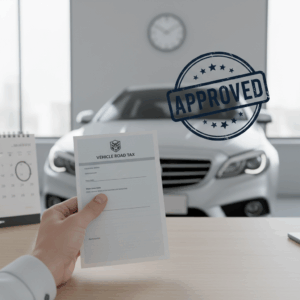Basics of a Car Leasing Agreement
A car leasing agreement is a contract where a person can use a vehicle for a set period by paying monthly fees. The user does not own the car but can opt to purchase it later.
Understanding the core terms is essential to avoid surprises. The agreement outlines key details like the vehicle specs, involved parties, and lease duration, all of which affect your obligations and options.
Vehicle and Party Identification
The contract must clearly identify the vehicle, including make, model, year, and VIN number. Accurate information ensures there’s no confusion about which car is leased.
It also specifies the parties involved: the lessee (user) and the lessor (leasing company or financial institution). This defines responsibilities and legal rights for both sides.
Precise data helps protect both parties and forms the basis for any future claims or inquiries about the vehicle or lease terms.
Contract Duration and Its Impact
Lease durations typically range from 24 to 60 months. Choosing the right length affects monthly payments and the residual value, which is the car’s worth at lease end.
A shorter term usually means higher monthly fees but quicker ownership option or vehicle turnover. Longer terms lower monthly payments but increase total interest and obligations.
The contract length must align with your financial plans and intended vehicle use to maximize benefits and avoid penalties for early termination.
Financial Details in Leasing Contracts
Financial terms in a car leasing contract are crucial to understand, as they define your payment obligations and overall cost. This includes the vehicle’s total value and how it translates into monthly fees.
Knowing these details helps you budget effectively and avoid unexpected expenses. It explains what you pay for and what remains your responsibility throughout the lease term.
Total Vehicle Value and Monthly Payments
The contract specifies the total value of the vehicle, which influences the monthly payments you make during the lease. You’re essentially paying for the car’s depreciation and use.
Monthly payments are typically lower than loan installments because you’re not covering the full vehicle cost, just its expected loss in value plus interest and fees.
Understanding how these payments are calculated allows you to compare lease offers and ensure the terms fit your financial situation and needs.
Initial Payment and Residual Value
Many leases require an initial payment or down payment, which reduces your monthly fee. This upfront cost is negotiable and impacts the overall lease expense.
The residual value is the estimated worth of the car at the end of the lease. This figure is key if you plan to purchase the vehicle later or return it without extra charges.
A higher residual value generally means lower monthly payments but could result in a larger final purchase price if you choose to buy the car.
Penalty Clauses and Early Termination Fees
Leasing contracts include penalty clauses for breaching terms, especially if you terminate the lease early. These fees can be substantial and should be reviewed carefully.
Early termination typically results in paying remaining lease balances or predefined penalties, making it costly to exit the lease before the agreed period.
Understanding these clauses helps you plan your lease duration responsibly and avoid unexpected financial burdens from breaking the contract.
Usage and Maintenance Responsibilities
Understanding your usage limits and maintenance duties is essential in a car leasing agreement. These elements protect both the lessee and lessor and prevent costly penalties.
The contract sets clear expectations regarding how the vehicle should be used and maintained throughout the lease period to ensure it stays in acceptable condition.
Kilometer Limits and Condition Requirements
Most leasing contracts include a kilometer limit to avoid excessive vehicle wear. Exceeding this limit usually triggers additional fees that can increase your costs.
Lessee must keep the car in a condition reflecting normal wear and tear. Excessive damage beyond expected use may require repair charges upon lease end.
Adhering to these mileage and condition rules helps prevent unexpected expenses and ensures a smooth lease conclusion without disputes.
Maintenance, Repairs, and Insurance Obligations
The lessee is typically responsible for routine maintenance and repairs during the lease, including oil changes, tire care, and fixing damages not caused by normal wear.
Insurance is another critical responsibility. The lessee must maintain adequate coverage to protect the vehicle from accidents, theft, or other damages throughout the lease term.
Failing to fulfill these obligations may result in penalties or void warranty protections, making it vital to understand and follow all upkeep and insurance requirements carefully.
Options and Negotiations in Leasing
The purchase option allows lessees to buy the vehicle at the lease’s end, offering flexibility beyond just returning the car.
Negotiating terms at the start can improve your contract, including price, coverage, and other beneficial clauses that impact overall costs.
Purchase Option and Pricing
The contract must clearly state the purchase option, including the price, usually based on the residual value agreed upon at signing.
This option gives you control to buy the car after lease expiration, often at a predetermined price, which can be lower than market value if the residual is fair.
Understanding this price helps you decide whether to return the vehicle or own it, depending on its condition and market factors at the lease end.
Negotiating Terms and Additional Coverage
Negotiations can cover monthly payments, mileage limits, and maintenance provisions, helping tailor the lease to your needs and budget.
Consider adding extra coverage like GAP insurance, which protects against losses if the vehicle is totaled and its value is less than owed.
Early discussions with the lessor can secure more favorable terms and potentially avoid costly penalties or unexpected charges later on.







